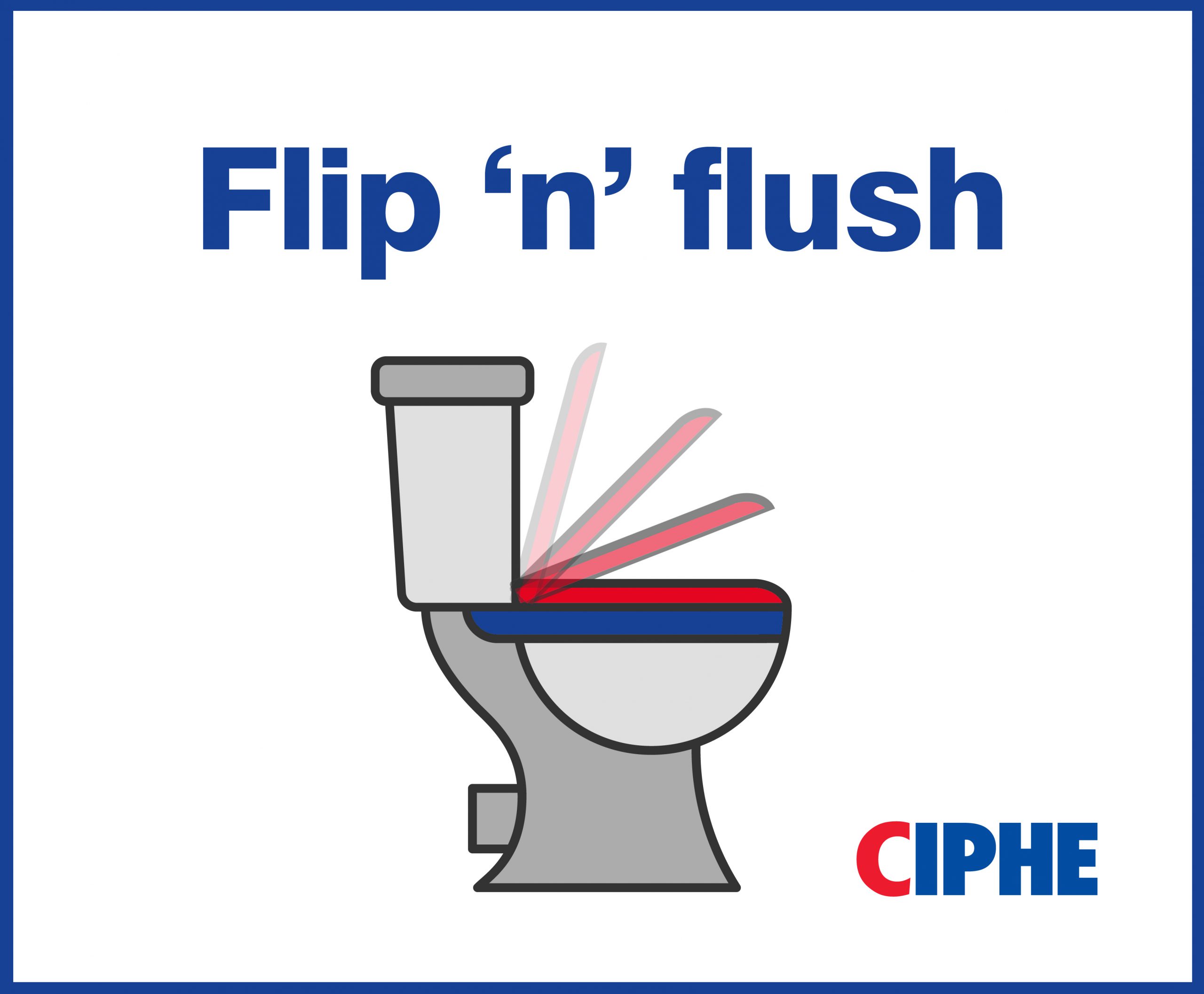The Chartered Institute of Plumbing and Heating Engineering (CIPHE), is advising everyone to flip down the toilet seat before they flush, in a new campaign aimed to help stop the spread of coronavirus, germs and other nasties spread by ‘toilet plume.’
The term toilet plume is nothing new and has been researched numerous times over the years. When lavatories are flushed, turbulence from the toilet bowl can enable tiny droplets and aerosol particles to be released into the air.
It had been generally accepted that while there was a small risk of transmission of illnesses, for the healthy and those with good hygiene, it would pose few problems. Germs don’t tend to survive long on surfaces such as toilet seats and hand washing was normally enough to wash away any harmful bacteria or viruses. Then Coronavirus hit.
The problem
New research – Can a toilet promote virus transmission? From a fluid dynamics perspective by Yun-yun Li, Ji-Xiang Wang and Xi Chen – warns that 40-60% of toilet plume particles can reach to a height of 106.5 cm above the ground – well in excess of the height of a toilet seat – enabling the spread of particles on nearby surfaces. During computer simulations, particles could also stay suspended in the air long enough to be breathed in post-flushing.
This increases the potential spread of bacteria and viruses in the surrounding area of the toilet and makes the transmission of germs a real possibility. This has big implications both in the home, where family bathrooms are also used for activities such as teeth brushing, and public lavatories, where multiple users can come into contact with contaminated surfaces.
Can toilet plume spread coronavirus?
Scientists are learning more every day about the transmission of coronavirus. According to current evidence, coronavirus is primarily transmitted between people through respiratory droplets and contact routes. Airborne transmission is possible via aerosols.
While it’s a rather taboo subject, the truth is that many viruses can be spread via faecal–oral transmission. Though this may not be the main infection route for coronavirus, the virus has been found in urine, faeces and in sewerage systems around the world. With some patients experiencing symptoms including diarrhoea and vomiting, coronavirus has been found to survive in the digestive tract, making faecal–oral transmission possible.
The solution
With our understanding of coronavirus transmission growing, we are now being urged to flip ‘n’ flush when it comes to using the toilet. Simply closing the lid when flushing the toilet can remove the danger cause by plume.
Needless to say, this should always be backed up by vigorous hand washing routine. For those wanting to be ultra careful, cleaning the toilet seat before you use it can also reduce the risk.
CEO of the CIPHE, Kevin Wellman said, “This has long been an area of discussion and there is evidence to show that toilet plume could be a contributing factor in the spread of disease. While this latest research still needs to be proven in real life situations, we should take all the measures available to help stop the spread of coronavirus and other illnesses such as staphylococcus and E. coli.
“While closing the toilet seat is good practice in the home, with businesses now opening back up, it’s especially important to maintain good hygiene when using public toilets. The risk of contamination grows with the number of different people using facilities, so we are urging everyone to flip ‘n’ flush the toilet seat when using the lavatory.”


